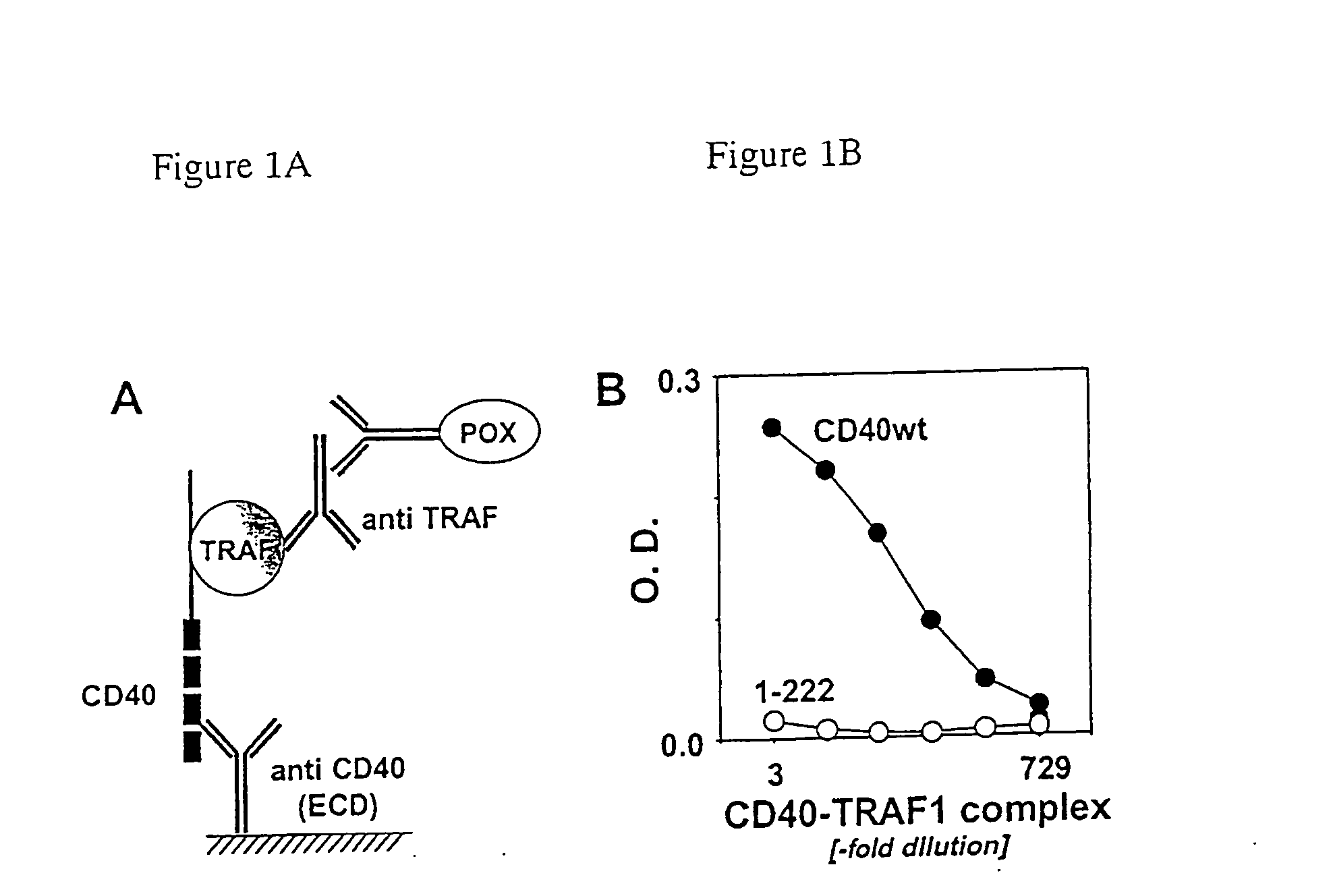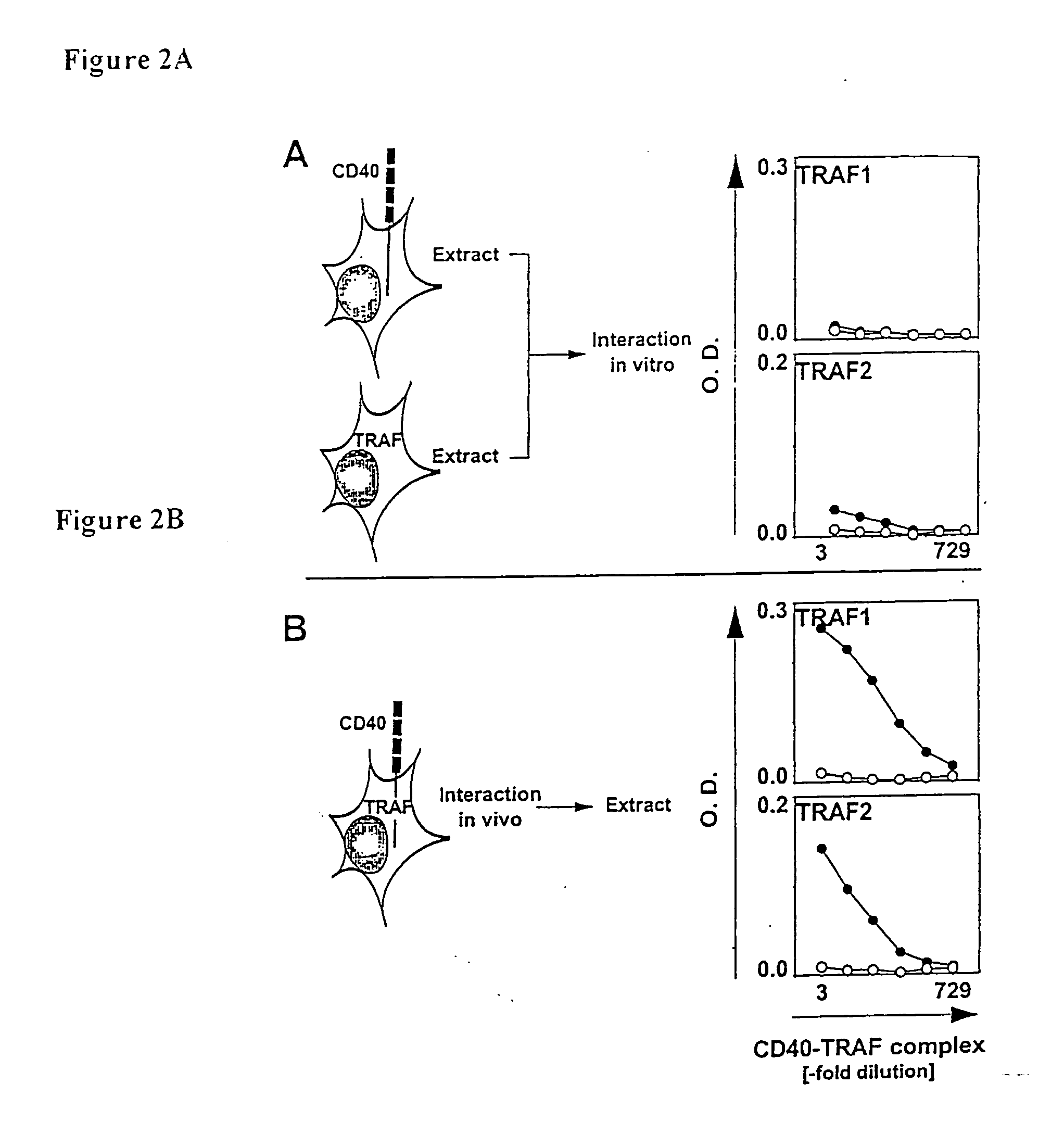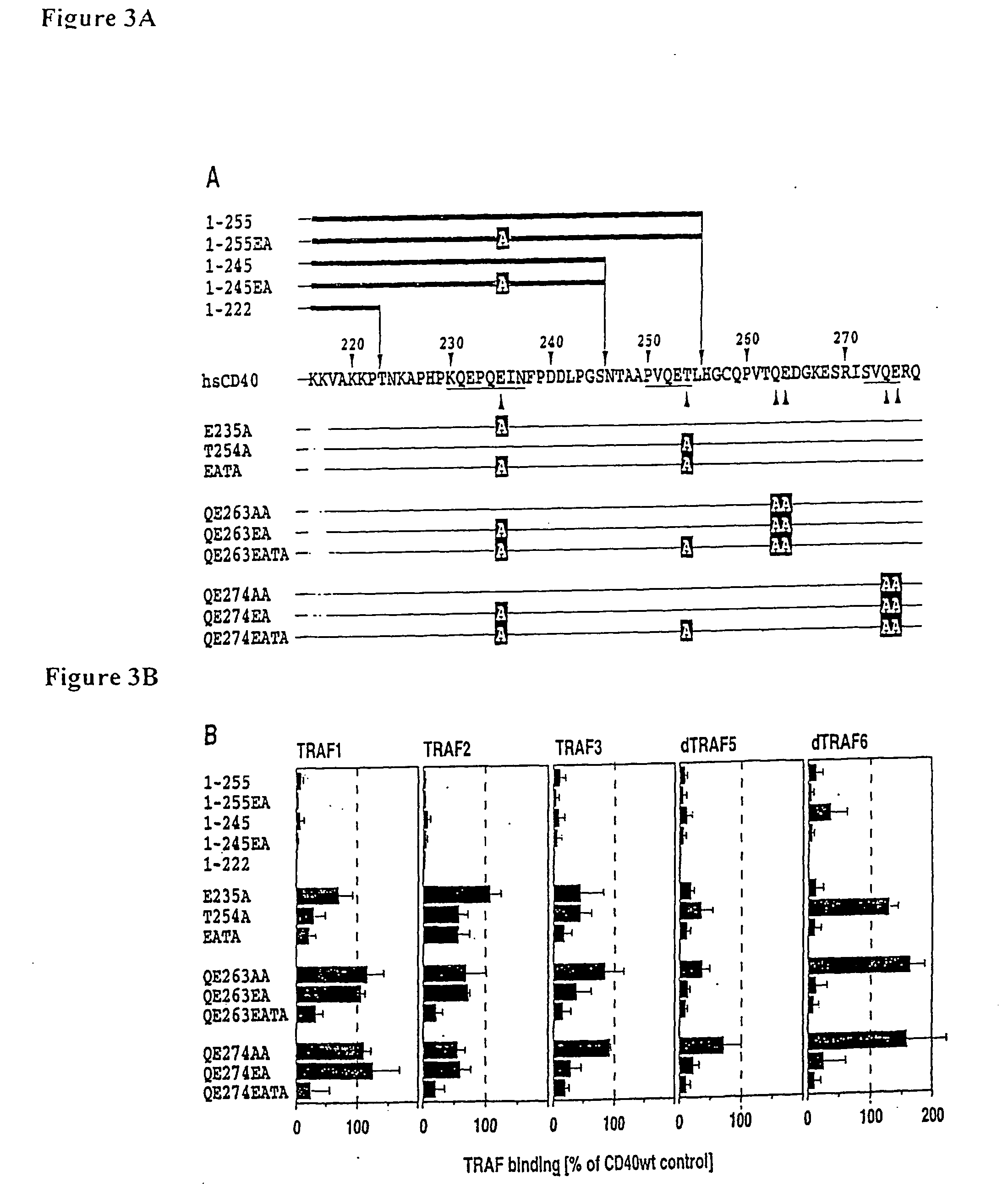Method and kit for monitoring recruitment of proteins to the intracellular domain of a receptor in intact cells
a technology of intracellular domain and antibody, which is applied in the field of immunological method and kit for monitoring the recruitment of proteins to the intracellular domain of the receptor in intact cells, can solve the problems of no general, sensitive, specific, easy to perform and efficient method, etc., and achieve the effect of inhibiting binding
- Summary
- Abstract
- Description
- Claims
- Application Information
AI Technical Summary
Problems solved by technology
Method used
Image
Examples
example 1
Monitoring TRAF1 Recruitment to CD40 in Intact Cells.
[0080] In order monitor TNF receptor associated factor 1 (TRAF1) recruitment to the CD40 receptor, in intact cells, CD40 and TRAF1 encoding plasmids generated as described in example 7) were used to co-transfect the human embryonic kidney 293T cells (HEK293 ATTC CRL-1573 over expressing the T antigen) (DuBridge et al 1987). 2×105 cells were seeded at into 3.5 cm dishes grown 16 hours at 37° C. and transfected with 1 μg CD40 expression plasmid and 2 μg of an expression plasmid encoding TRAF by the calcium phosphate method (Kingston et al. 1993). The two expression plasmids, TRAF1 plasmid and CD40 plasmid were used for transfection at a ratio greater than 2:1 respectively in order to saturate all the CD40 molecules produced. Twenty-seven hours after transfection, the cells were detached, washed once with ice cold phosphate buffered saline (PBS) and detergent extracted with
[0081] 180 μl lysis buffer [phosphate buffered saline (PBS...
example 2
Comparison of TRAF Recruitment to CD40 in Intact Cells and in Cell Lysate.
[0087] To measure TRAF recruitment to CD40 many studies relied on experimental systems that probe TRAF binding to synthetic peptides or soluble fragments of the CD40 signaling domain (Rothe et al. 1994, Hu et al. 1994, Cheng et al. 1995, Mosialos et al. 1995, Ishida et al. it 1996, Ishida et al. b 1996, Boucher et al. 1997, Pullen et al. 1998 and Pullen et al. 1999). A possible problem of these methods is that the signalosome assembly does not occur in the “juxta-membrane” environment. Therefore, recruitment of TRAF1 and TRAF2 by CD40 intact cells versus cell lysate was compared. In the experiment, CD40 and TRAF1 or TRAF2 were co-expressed or expressed separately in 293T cells (constructs described in example 7 below). Plasmid concentrations and ratios were identical to the experiment described in example 1. After 27 hours, the cells were detergent lysed as in example 1. The extracts from 293T cells expressi...
example 3
Quantitation of TRAF Recruitment to CD40.
[0089] The recruitment of TRAF to CD40 can be quantitatively measured using the assay described in example 1. For that purpose, the assay conditions were adjusted in such a way that TRAF expression was in significant excess over the expression of CD40. This was the case when the TRAF expression plasmid was used at a two to three fold excess over the CD40 expression plasmid. The CD40 bound TRAF concentration was measured as described in example 1. A reference extract containing CD40 / TRAF complexes served as a standard in each assay. This standard extract consisted of a large pool extract from cells that had been co-transfected with the plasmids encoding CD40 / TRAF1, CD40 / TRAF2, CD40 / TRAF3, CD40 / TRAF5 and CD40 / TRAF6. The extracts were tested for the presence of CD40 / TRAF complexes and the complex concentrations in each extract were arbitrarily defined as 1000 U / ml. The extracts were frozen in small aliquots and kept at −80° C. until further us...
PUM
| Property | Measurement | Unit |
|---|---|---|
| temperature | aaaaa | aaaaa |
| concentration | aaaaa | aaaaa |
| composition | aaaaa | aaaaa |
Abstract
Description
Claims
Application Information
 Login to view more
Login to view more - R&D Engineer
- R&D Manager
- IP Professional
- Industry Leading Data Capabilities
- Powerful AI technology
- Patent DNA Extraction
Browse by: Latest US Patents, China's latest patents, Technical Efficacy Thesaurus, Application Domain, Technology Topic.
© 2024 PatSnap. All rights reserved.Legal|Privacy policy|Modern Slavery Act Transparency Statement|Sitemap



